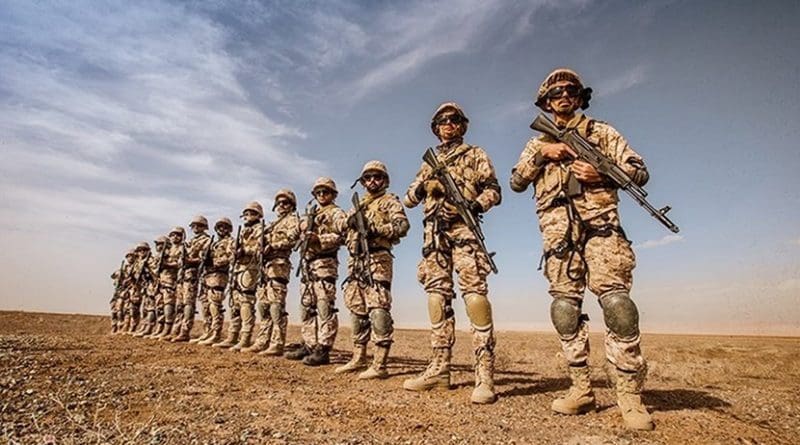Perils Of Proxy Wars In Afghanistan: A Comparative Study Of The ISI Of Pakistan And The IRGC Of Iran – Analysis
Proxy wars have been used by the powers to serve their national security and long term interests without being involved directly. The general syndrome is that a powerful country supports a state or even non-state actor who has mutually shared goals in a particular area or zone. But the history of proxy wars in our times is wrought with numerous debilitating moral consequences, threats to security and stability in the theatre of proxy war. In addition, it can simply drag the power into an unending stream of conflagration with a heavy cost of manpower and material. It may also cost the power in terms of credibility and aura of power.
Even in our contemporary times, proxy wars are tearing countries and regions apart with immensely destructive consequences for the population. A simple and cursory overview is enough to suggest that proxy wars suffer from several perceptible limitations. Besides the moral deficiency they run the risk of escalation, control over the arms and ammunition supplied and the risk of their slipping into bad hands and therefore violence continues in the post-settlement period with spiraling cycles. Proxy wars defy any intervention of peace measures and settlement.
There is worldwide attention towards Iran’s growing influence in the whole of the West Asian region with its very effective network of proxies across the region. This has caused huge consternation among its regional rivals — Saudi Arabia and Israel in particular and the interests of the US and its allies. The IRGC of the Islamic Republic of Iran has created a network of proxies through its Quds Force in the region and beyond, especially in Afghanistan. This has caught the attention of security professionals and academics. The activities of the ISI of Pakistan has adopted the proxy syndrome and has had devastating consequences for the countries of South Asia, including Afghanistan and Iran at large and India in particular owing to its historically hostile background.
A comparative study of the two — IRGC and ISI — and their proxy wars in Afghanistan will provide a necessary insight for an effective Indian strategy for dealing with this menacing national security threat and the adoption of a resilient and pragmatic policy towards West Asia, a region of extreme strategic and geo-economic significance. A critical perusal of the two will be a sure route to unravel their future pattern and their concomitant consequences.

The Directorate of Inter-Service Intelligence, generally referred to as ISI, is a ruthless separate entity of Pakistan, almost independent of its military and beyond any meaningful oversight of the civilian government.[1] It has huge political influence and around 25,000 personnel manned by motivated army personnel, including some members who are retired. Its Afghanistan operation is India-centric, and viewed from its India policy that the policy of Afghanistan towards India must be in line with Pakistan and adopts punitive approach and action in the wake of Kabul’s tilt towards India.[2] ISI’s coercive policy and proxy war in Afghanistan to attain its geopolitical goals has resulted in an unending stream of violence in the post 9/11 period, to remain relevant in the face of US presence and competition from other regional powers mainly Iran’s IRGC has assumed Jihadi route of unprecedented scale.
Besides the Taliban, ISI has promoted and supported the Haqqani Network, officially under the larger Taliban umbrella, and it maintains distinct command, control and lines of operations. A section of the Pakistan military view the network better as an ally proxy force for its Afghan interests, as the network has repeatedly targeted the Indian interests — infrastructure projects and construction sites in Afghanistan.[3]
The Network is based in Pakistan’s North Waziristan and comprised mainly of the Zardan tribe. The group has been very lethal and sophisticated in its targets against the US coalition forces and Afghan government security apparatus. It has demonstrated a high level of coordination in its operation and targets with small arms, rocket attacks, IEDs, suicide attacks and bomb-laden vehicles.[4] The US coalition has suffered considerably and has not been able to manage the affairs with the Pakistan government as these proxies are functioning under the directions of the ISI. The ISI has been able to manoeuvre successfully in their mission with these proxies in Afghanistan by disguising itself as friend of the US strategy in the country.
However, the most notable element in the Afghan imbroglio is the steady rise and spread of influence of Iran’s IRGC activities. Iran has a historical interest and stake in the affairs of Afghanistan. It also shares intimate ethnic, linguistic and religious with the Afghan Shia minority Hazaras in the central and northern region of the country. Its historical roots can be traced back to the Treaty of Paris, 1857 when Iran abandoned its historic claim on Herat, but reserved the right to send forces into Afghanistan if its frontier is violated.[5]
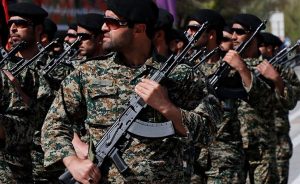
Given this background, Iran is firm with its policy direction towards Afghanistan — stable and friendly or at least, not an inimical government in the country to have stable border, and ensure the safety of its Shia minority, while maintaining cultural relations and economic engagements particularly in the Herat region.
Iran’s policy therefore, has been firmly ruthless, but evinces a pragmatic flexibility and dynamism to adjust in the changing geopolitical condition and security ecosystem of Afghanistan. The violent excesses of the Taliban against the Shia population and bloody raid of Iranian Consulate in Mazar-e-Sharif killing eight officials made the IRGC to cooperate and coordinate with the invading American army in 2001 by providing intelligence and even included IRGC elements fighting on the ground. This “alliance” soon dissipated, with the two parting their ways when Iran was declared as part of the “Axis of Evil” by the US.
The IRGC is an ideological driven entity and uses it ideology pragmatically to serve the larger interests of the Islamic Republic of Iran. The Quds force of the IRGC is particularly assigned with its task abroad. The changing security and power dynamics in Afghanistan has made the IRGC to coordinate with the Taliban based on their shared Islamic ideology and common enemies — the foreign occupiers in the country. The continued presence of the Taliban and their control over large parts of Afghanistan has reduced their dependency on Pakistan for a safe haven.
The contact and cooperation between the Taliban and the IRGC has become a lethal combination against the US and allies in Afghanistan. For the IRGC it was a clever move to maintain leverage with the Afghan government. Through its special Quds force the IRGC has supplied considerable weapons, explosives, roadside bombs to the Afghan Taliban. The IRGC has a very farsighted vision and strategy behind such an unlikely alliance. A critical perusal leads to the fact that though it is against a hostile regime on its eastern border, the alliance is able to obtain gains for the Islamic Republic in many ways.
Using this leverage to escalate violence in Afghanistan can limit the constraining of Iran’s policy by the West. It also allows Iran to maintain its sphere of influence in Herat while Taliban violence continues in other parts of the country and to have strategic advantage for its transport linkages of the Gulf with Central Asia and the Far East. One of the Taliban governing councils or Shura is the Mashhad Shura in the Iranian province of Khorasan-e Razavi, initially opened as a liaison office between the Taliban and IRGC in 2007. The Ansar Corps was established by Gen. Qassem Suleimani and commanded by the current head of the Quds Force, Esmail Qaani for supervision and coordination of the IRGC-Taliban relations.[6]
The IRGC has used its ideological fervor to manage dynamically all its proxy theaters by creating network and mobilizing them across the sectors. The IRGC mobilized its military and advisors to Syria to prop up the regime of President Assad.
This included Afghan war hardened veterans of the Fatemiyon Brigade who created a revolutionary niche during the Iran-Iraq war of the 1980s.[7] The Fatemiyon Division is an affiliate of the IRGC composed of the Afghani Shia. Its formation was initially mobilized to defend the shrine of Sayyed Zeinab in the outskirt of Damascus. Later on, the IRGC began cultivating the Afghan resistance narrative to the growing transnational Sunni jihadism. Their number has been expanding and has become an important factor in the Syrian battlefield.[8]
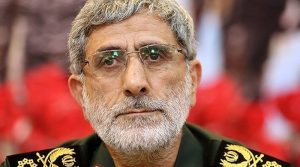
The pattern of the Fatemiyon in the Syrian conflict is going to be further expanded under the leadership of Esmail Qaani of the Quds Force. Esmail Qaani has long association with the Fatemiyon Brigade and has been nurturing the group for a substantial period of time. Even in 2018 he visited the country with an Iranian delegation and had talks with President Ashraf Ghani and Mr Abdullah Abdullah, the Chief Executive of the country.[9]
The IRGC has grown in strength in Afghanistan and adopting its old tested tactics used in Iraq by the Quds force, the tactics of abduction. This tactic has put the Afghan government under strain and all other actors in the country — the US coalition and the Pakistani proxies operating in the country. To expand its support base and ideological penetration among the populace, the Iranian region with its IRGC network has opened a TV station and is promoting Islamic fundamentalism with regular programs. It is thus apparent that the influence of the IRGC in Afghanistan is on the constant rise, which makes the conflict in the country further complicated.
The Islamic State-Khorasan (IS-K) group was formed in 2015 with estranged and defected members from many terror groups based in Pakistan, such as Tehrik-e Taliban Pakistan (TTP), Lashkar-e-Taiba, Lashkar-e- Islam, Jamaat-ud-Dawa, the Haqqani group and Islamic movement of Afghanistan under the leadership of Hafiz Saeed Khan, a veteran of Tehrik-e Taliban Pakistan (TTP).[10] The membership and leadership of this additional group hardly leaves any doubt about its patronage of the ISI and it project of targeting against Indian interests in Afghanistan. The recent gruesome attack on Gurudwara in Kabul killing 28 innocent worshippers by the IS-K and the claim by the perpetrators that the attack was aimed at avenging Indian action in Kashmir and the report disclosed by the NDS that the arrested leader of the IS-K, Abdullah Orazkai alias Aslam Farooqi has revealed his close relations with Haqqani Netwrk and Lashla-e Taiba (LeT) and having links with “Regional Intelligence Agency” a euphemism for the ISI.[11]
The ISI wants to have an unchallenged influence in Afghanistan and does not want the rise of increasing Shia power in the country — an apparent syndrome of global competition between the Shia and Sunni. With its loosening control over the Afghan Taliban, the ISI wants to disrupt the growing proximity of the Afghan government with the Islamic Republic of Iran along with India through their joint project of Chabahar that sits strategically on the Indian Ocean. The port is considered as a gateway to opportunities for trade with Central Asian countries.
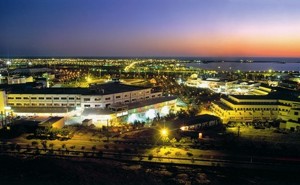
Besides supporting both the Afghan Taliban and the Haqqani Network to conduct attacks on India and Afhanistan, the ISI is responsible for attacks on the Islamic Republic by the Pakistan-backed terror group, Jaish al-Adl particularly in Chabahar zone.[12] The pattern is not new rather it appears to be a regular and planned activity as there has been similar attacks on the IRGC elements in that area. The attack which killed 27 members of the elite force (IRGC) in December 2019, and the beginning of such attacks on the Iranian border guards, can be traced since 2013. In October 2018, the Jaish al-Adl operation led to the abduction of 12 Iranian security personnel near Zahedan along the Iran-Pakistan border.[13] It seems that the IRGC and ISI tussle for influence and their proxy pursuit in Afghanistan is being played out in this new sector as well.
Chabahar is the convergence point of geo-economic and geopolitical interests of India and Iran in Afghanistan. For Afghanistan it provides the much needed strategic relief from its dependence on Pakistan to get access to the Indian ocean. Such developments are at loggerheads with Pakistan’s Afghan policy which has made the Pakistani deep state, ISI to create an atmosphere of disruption through its proxies. There was a similar attack in the port city of Chabahar by Pakistan-based Ansar al Forghan with links with the outlawed Jaish-e-Mohammed (JeM).[14] Such developments has brought the IRGC and ISI face to face to the detriment of the possible peace and security in Afghanistan and the larger atmosphere of peace in the region.
The IRGC has for a long time nurtured its ideological entity inside Pakistan among the poorer and discriminated Shia population. The Zaynabiyon or Zainiboun Brigade is recruited by IRGC from the Pakistani Shia immigrants in Iran. As per intelligence reports, Shia men are recruited in Karanchi, Gilgit, Quetta and Prachinar to fight in Syria. Major General Qassem Soleimani was training them for years to participate in the Shia jihad in the region.[15] This group has been used by the IRGC to counter the ISI designs against the interests of the Islamic Republic in the area and their extended face off in Afghanistan. As per the Quds Force strategy, Zaynabiyon fighters are expected to be used in the strategic Syria-Iraq border — a necessary corridor link for these two countries in the overall strategy of the IRGC.[16]
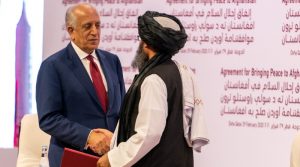
The US-Taliban Agreement signed on February 29 amidst this devastating proxy war propelled by IRGC and ISI doesn’t appear to be bringing any semblance of peace in the country. The intra-Afghan talks are going to be a very rough road to reach any point of agreement. The Taliban office in Doha, the seat of talks between the US and the Taliban seems to suggest that Taliban has grown in autonomy from its early backers — Saudi Arabia, and ISI influence. The role of Saudi Arabia in the blockade of Qatar and the latter’s growing proximity with the Islamic Republic seem to have helped clear the misunderstanding and mistrust between the Taliban and the Islamic Republic of Iran.
The IRGC has stitched together this alliance through its spreading networks in Afghanistan based on their common vision of political Islam and the expulsion of the foreign occupiers from Afghanistan in particular and entire West Asia. Thus behind the scenes, the IRGC is sure to play a considerable role in the ongoing intra-Afghan negotiations. The IRGC and the Taliban share common interests and common threat perceptions, and therefore this will remain a strong factor in the Afghan politics and its peace and security.[17] The withdrawal of US troops from Afghanistan can thus create a potential power vacuum that may lead to the increased influence of these proxy actors and IRGC as happened when the US left Iraq in 2011.[18]
The proxy wars of IRGC and ISI have compounded the Afghan conflict. Such policy pursuit in the garb of religious fervor and ideological competition by IRGC and ISI has pushed Afghanistan in an unending track of violence and turmoil. Its dangerous spill-overs are the natural corollary that is proved by the increasing entangling of the Afghans elsewhere, such as the Fatemiyons in the far away Syrian conflict in West Asia. History bears the fact that the end-result of such proxy war games are also devastating for the peace and security of the sponsor countries. Currently, there is a risk that such a scenario is bound to have a dangerous syndrome in Afghanistan, with its spilling over in the region of South Asia and West Asia. Such a dose of religious fervor and ideology in proxy wars based on narrow national interests determined by regime interests and organizations like the ISI and the IRGC will have far deeper dangerous implications for global security and order. India has strong strategic interests in Afghanistan and Iran and assumes it to be of a paramount significance to realize those goals. Therefore India must tread carefully in the wake of these proxy war games between the ISI of Pakistan and the IRGC of Iran to pursue its interests in Afghanistan and beyond. India must device and pursue a policy based on pragmatic national interests and a larger requisite of global peace and security as a responsible democratic country.
*About the author: Dr Khushnam P N, Independent IR and Regional Security Researcher and Analyst, Specialization: Iran, US & Gulf Security, [email protected]
End Notes:
[1] Douglas A. Livermore, “Pakistani Unconventional Warfare Against Afghanistan: A Case Study of the Taliban as an Unconventional Warfare Proxy Force”, Small Wars Journal, Virginia, 22nd September, 2011 https://smallwarsjournal.com/jrnl/art/pakistani-unconventional-warfare-against-afghanistan
[2]Farman Kakar, “Problems with Pakistan’s Afghan policy”, The News November 4, 2018 https://www.thenews.com.pk/tns/detail/566614-problems-pakistans-afghan-policy
[3] Jeffery A Dressler, “The Haqqani Network: From Pakistan to Afghanistan”, Afghanistan Report 6, Institute for the Study of War, October, 2010 http://www.understandingwar.org/report/haqqani-network
[4] Haqqani Network, Counter Terrorism Guide, National Counter Terrorism Centre https://www.dni.gov/nctc/groups/haqqani_network.html
[5] Sajjan M. Gohel, “Iran’s Ambiguous Role in Afghanistan”, Combating Terrorism Centre, Volume-3, Issue-3, 2010 https://ctc.usma.edu/irans-ambiguous-role-in-afghanistan/
[6] Mohammed Harun Arsalai & Wil Patrick, “Iran’s Shifting Afghan Alliances Don’t Fit Easy Narratives”, Foreign Policy, 18th February, 2020
[7] Frud Bezhan, “Iran’s New Quds Force Leader Has A Long, Shadowy History With Afghanistan”, 15th January, 2020 https://www.rferl.org/a/iran-s-new-quds-force-leader-has-a-long-history-with-afghanistan/30379354.html
[8] Tobias Schneider, “The Fatemiyon Division: Afghan Fighters in the Syrian War”, Middle East International, Policy Paper 2018-9, October, 2018 https://mail.google.com/mail/u/0/?tab=rm&ogbl#inbox/QgrcJHsNmGvBWXXnXVrwRPfRlrbWdhvLNSg?projector=1&messagePartId=0.1
[9] Anisha Shahid, “Who Is Soleimani’s Successor Ismail Qaani?” Tola News, 5th January, 2020 https://tolonews.com/afghanistan/who-soleimani%E2%80%99s-successor-ismail-qaani
[10] Islamic State Khorasan (IS-K), Centre for Strategic and International Studies, 2108 https://www.csis.org/programs/transnational-threats-project/terrorism-backgrounders/islamic-state-khorasan-k
[11] European Foundation for South Asia Studies, “Commentary: Pakistan’s role in the Kabul Gurdwara attack has been established, and its mounting despondency is becoming”, European Foundation for South Asian Studies, 10th April, 2020 https://www.efsas.org/commentaries/pakistan%E2%80%99s-role-in-the-kabul-gurdwara-attack-has-been-establish
[12] “India, Iran call for immediate end to all support to terror sanctuaries”, The Week, 24th December, 2019 https://www.theweek.in/news/world/2019/12/24/india-iran-call-for-immediate-end-to-all-support-terror-sanctuaries.html
[13] Ted Regencia, “Iran warns Pakistan to crack down on Jaish al-Adl”, Al Jazeera, 16th February, 2019 https://www.aljazeera.com/news/2019/02/iran-warns-pakistan-crack-jaish-al-adl-190216071021469.html
[14] Dipanjan Roy Chaudhury, “Jaish-linked Pakistan outfit suspected to be behind terror attack in Chabahar”, Economics Times, 7th December, 2018 https://economictimes.indiatimes.com/news/defence/jaish-linked-pakistan-outfit-suspected-to-be-behind-terror-attack-in-chabahar/articleshow/66979903.cms?from=mdr
[15] Suddaf Chaudry, “Iran lures Pakistani Shias to fight its war in Syria”, The Arab Weekly, 16th September, 2018 https://thearabweekly.com/iran-lures-pakistani-shias-fight-its-war-syria
[16] “Liwa Zaynabiyoun Brigade”, Global Security.com https://www.globalsecurity.org/military/world/para/zainabiyoun.htm
[17] Kashif Hussain, “Why the Taliban won’t Cut Ties with Iran”, South Asia Voices, 21st February, 2020
[18] Jackson Richma, “With US-Taliban deal, will Iran seek to fill power vacuum in, Afghanistan?” Jewish News Syndicate, 7th April, 2020 https://www.jns.org/with-us-taliban-deal-will-iran-seek-to-fill-power-vacuum-in-afghanistan/

